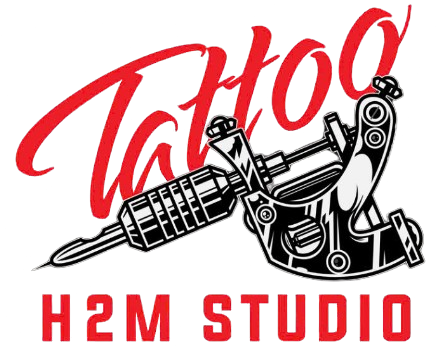What to avoid after getting a tattoo? This question haunts many first-time tattoo clients, and for good reason. Your fresh ink represents both an artistic investment and an open wound that requires careful protection during the critical healing period. At H2M Tattoo Studio, we've seen countless beautiful tattoos compromised by simple aftercare mistakes. Studies show that up to 6% of tattoos develop preventable complications—from infections and scarring to permanent fading—all because clients unknowingly sabotage their healing process through seemingly innocent daily activities.
Your tattoo's final appearance depends entirely on the choices you make in the first few weeks. Whether your artwork maintains its crisp lines and vibrant colors for decades, or fades into a disappointing blur, comes down to understanding what behaviors can destroy your investment. This guide reveals the nine most critical mistakes that could ruin your new tattoo, helping you protect both your skin and your investment.
Avoid Direct Sun Exposure and UV Damage
Fresh tattoos and sunlight are a dangerous combination that can lead to devastating and permanent damage to your new artwork. UV radiation penetrates the compromised skin barrier of a healing tattoo, causing immediate burns and long-term color degradation that can turn vibrant artwork into a faded shadow of its former self.
The science behind UV damage to tattoos is straightforward but alarming. Ultraviolet rays break down the ink pigments embedded in your skin, causing colors to fade unevenly and lose their saturation. Fresh tattoo skin lacks the natural protection of fully healed skin, making it up to 10 times more susceptible to sun damage. Even brief exposure can cause severe burns, blistering, and permanent scarring that will forever alter your tattoo's appearance.
To protect your healing tattoo from sun damage:
- Cover completely: Use loose, breathable clothing to shield the tattoo from any direct sunlight
- Avoid peak hours: Stay indoors or in shade between 10 AM and 4 PM when UV rays are strongest
- Wait before sunscreen: Don't apply sunscreen to fresh tattoos for at least 2-3 weeks until the skin has closed
- Choose quality protection: Once healed, use broad-spectrum SPF 30+ sunscreen specifically formulated for tattoos
- Plan activities wisely: Postpone beach trips, pool days, and outdoor events during the initial healing period
Remember that even cloudy days pose risks, as UV rays can penetrate cloud cover. Window glass in cars and buildings also doesn't provide complete UV protection, so remain vigilant about coverage even during seemingly safe activities.
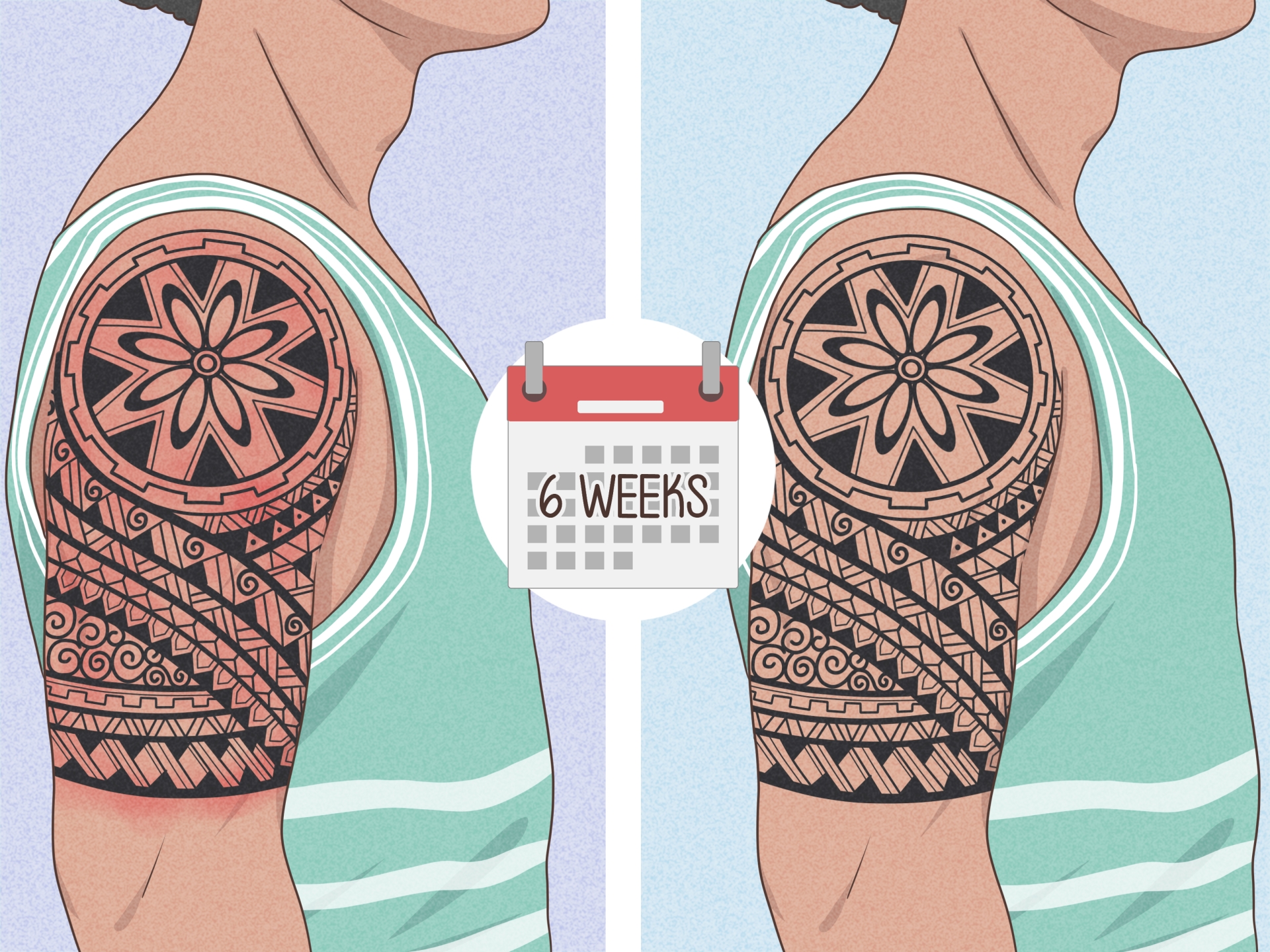
>>>> READ MORE: Can you shower after a new tattoo? 10 Essential Guidelines for Proper Care
Avoid Submerging the Tattoo in Water
One of the most dangerous mistakes people make is soaking their fresh tattoo in water, whether it's in swimming pools, hot tubs, bathtubs, lakes, or oceans. Submerging your healing tattoo creates the perfect environment for bacterial infections that can lead to serious complications, permanent scarring, and complete tattoo loss.
Water immersion poses multiple threats to your healing tattoo. Prolonged soaking softens and damages the protective scab layer, making your tattoo vulnerable to bacterial invasion. Public water sources like pools and lakes contain countless microorganisms, while even seemingly clean bathwater can harbor dangerous bacteria. The moisture also disrupts the natural healing process, potentially causing ink to leach out and colors to become patchy or uneven.
Safe showering practices during tattoo healing:
- Keep it brief: Limit showers to 5-10 minutes maximum
- Use lukewarm water: Hot water increases blood flow and can cause excessive bleeding or ink loss
- Avoid direct spray: Let water run over the tattoo gently rather than directing the showerhead at it
- Pat dry only: Never rub the tattoo with a towel—gently pat with a clean, soft cloth
- Clean towels always: Use a fresh, clean towel each time to avoid bacterial contamination
Wait at least 2-3 weeks before considering any water activities, and always consult with your tattoo artist about when it's safe to resume swimming or bathing based on your specific healing progress.
>>>> SEE MORE: What to do if a tattoo gets infected? 10 Essential Steps to Save Your Ink and Your Health
Avoid Picking, Scratching, or Touching the Tattoo
The intense itching and scabbing that occurs during tattoo healing triggers a natural urge to scratch and pick, but giving in to these impulses can cause irreversible damage to your artwork. Your hands carry countless bacteria, and disturbing the healing process can result in infections, scarring, and permanent color loss that may require expensive touch-ups or complete rework.
During the healing process, your body forms protective scabs and flaky skin over the tattoo as part of the natural recovery process. These protective layers contain healing ink and serve as barriers against infection. When you pick or scratch, you're literally removing pieces of your tattoo along with the protective covering, creating entry points for bacteria and disrupting the ink settling process.
The consequences of picking or touching your healing tattoo include:
- Color loss: Removing scabs can pull out fresh ink, leaving patchy or faded areas
- Scarring: Aggressive picking can damage deeper skin layers, creating permanent texture changes
- Infection: Introducing bacteria through broken skin can lead to serious complications
- Delayed healing: Constant trauma keeps the wound from closing properly
- Blowouts: Disturbing the healing process can cause ink to spread beyond intended lines
Instead of scratching or picking, try these safe alternatives to relieve itching:
- Cold compress: Apply a clean, damp cloth for 10-15 minutes to numb the area
- Gentle patting: Lightly pat the tattoo with clean hands instead of scratching
- Approved moisturizer: Apply a thin layer of tattoo-safe lotion to soothe dry, itchy skin
- Distraction techniques: Keep your hands busy with activities that prevent unconscious touching
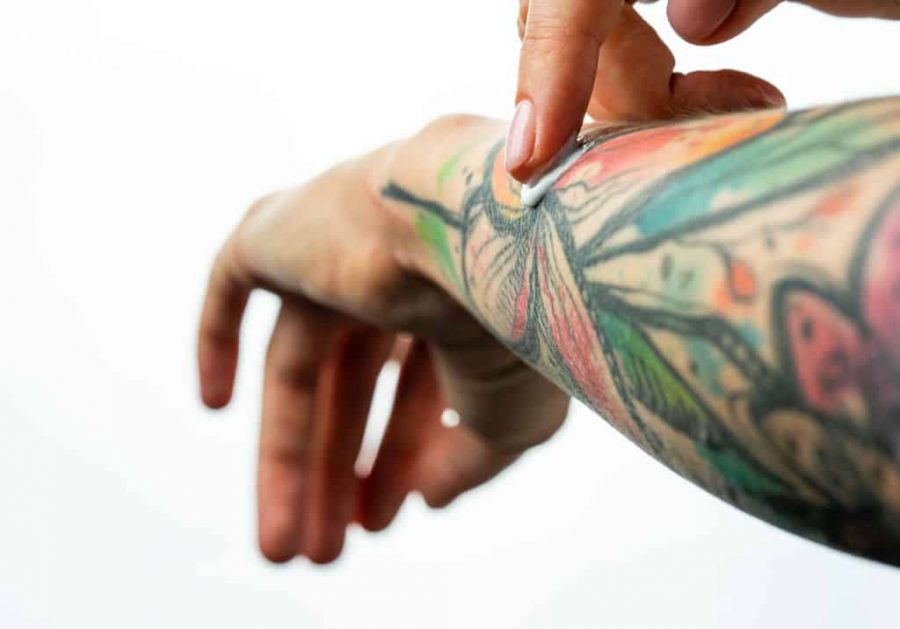
>>>> READ MORE: Allergic reaction to tattoo ink : 8 Essential Signs, Treatments & Prevention Tips
Avoid Tight, Irritating, or Non-Breathable Clothing
The clothing you choose during your tattoo's healing period can significantly impact the recovery process and final appearance of your artwork. Tight, rough, or synthetic fabrics create friction against your healing skin, potentially causing irritation, delayed healing, and even permanent damage to the tattoo's appearance.
Friction from clothing acts like sandpaper against your healing tattoo, constantly abrading the delicate new skin and disrupting scab formation. This mechanical irritation can cause ink to be rubbed away, colors to become uneven, and healing to slow dramatically. Additionally, non-breathable fabrics trap moisture and heat, creating an environment where bacteria can thrive and infections can develop.
Choose your clothing carefully during the healing period by selecting loose-fitting garments made from breathable, natural fibers like cotton. Avoid synthetic materials, wool, or anything with rough textures that might catch on your healing skin. For tattoos in areas covered by undergarments, consider going without bras or switching to soft, wireless options during the initial healing phase. If you must wear fitted clothing for work or special occasions, place a clean, soft cloth between the fabric and your tattoo to minimize direct contact.
Seasonal considerations are equally important. Summer heat increases sweating and the risk of clothing sticking to your tattoo, while winter's dry air and heavy layers can cause different challenges. Adjust your clothing choices based on weather conditions, always prioritizing your tattoo's healing needs over fashion preferences.
>>>> SEE MORE: Can you donate blood after a tattoo? 10 Essential Facts You Need to Know
Avoid Using Harsh, Scented, or Unapproved Skincare Products
Your regular skincare routine can become your tattoo's worst enemy during the healing process. Many common products contain ingredients that can irritate healing skin, interfere with the recovery process, or even cause allergic reactions that permanently damage your new artwork.
The skin around a fresh tattoo is hypersensitive and lacks its normal protective barrier. Ingredients that your skin normally tolerates—such as fragrances, alcohol, acids, or harsh preservatives—can cause severe reactions when applied to healing tattoo skin. These reactions range from mild irritation and delayed healing to serious chemical burns that require medical treatment and can permanently alter your tattoo's appearance.
Products to strictly avoid during tattoo healing:
- Fragranced lotions or soaps: Artificial scents can cause allergic reactions and irritation
- Alcohol-based products: These dry out the skin and can cause painful stinging
- Antibacterial soaps: Harsh chemicals can disrupt natural healing bacteria
- Exfoliating products: Scrubs or acids can damage healing skin layers
- Petroleum-based products: These can clog pores and trap bacteria, though some artists may recommend specific formulations
Instead, stick to products specifically recommended by your tattoo artist or those designed for sensitive, healing skin. Look for fragrance-free, hypoallergenic moisturizers with minimal ingredients. Popular tattoo-safe options include specialized tattoo aftercare products, unscented white lotions, or gentle products designed for eczema or sensitive skin.
The debate between petroleum-based and breathable ointments continues among professionals. While some artists recommend products like Aquaphor for their protective properties, others prefer lighter, more breathable options that won't clog pores. Follow your specific artist's recommendations, as they know their technique and ink choices best, and avoid switching products mid-healing unless problems develop.
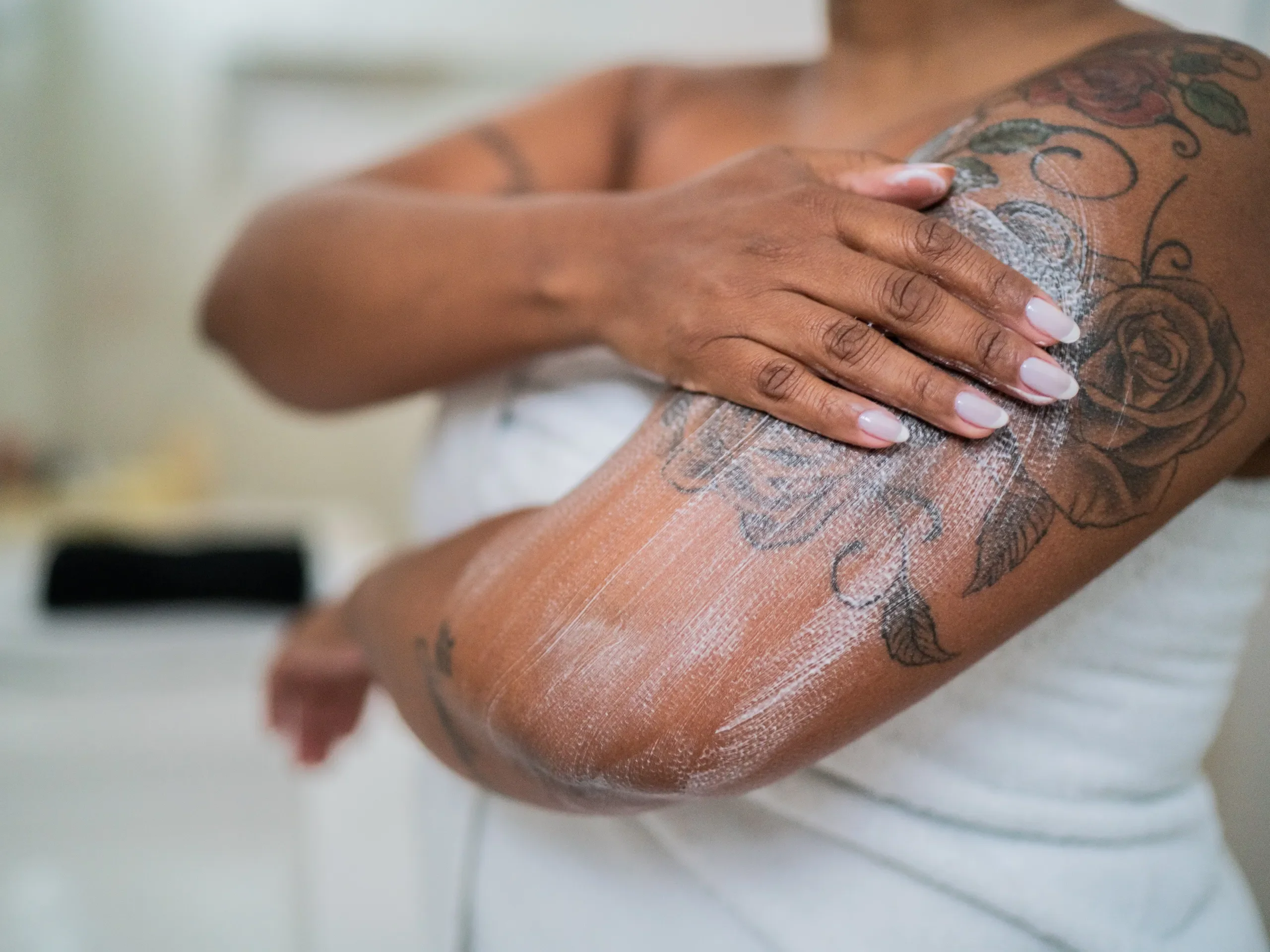
Avoid Excessive Sweating and Intense Physical Activity
While staying active is important for overall health, intense physical activity during tattoo healing can seriously compromise your results. Excessive sweating creates a breeding ground for bacteria, while vigorous movement can stretch and damage healing skin, potentially causing permanent distortion of your artwork.
Sweat contains salt, toxins, and bacteria that can irritate your healing tattoo and increase infection risk. When you exercise intensely, increased blood flow can cause excessive bleeding or oozing from your fresh tattoo, while the salt in sweat acts as an irritant on the open wound. Additionally, gym equipment, yoga mats, and exercise clothing harbor countless bacteria that can easily transfer to your vulnerable tattoo.
The physical stress of intense exercise can also stretch and distort your healing tattoo. Activities that involve repetitive motion over the tattooed area—such as running with a leg tattoo or weight lifting with an arm tattoo—can cause the skin to stretch and contract repeatedly, potentially affecting how the ink settles and heals.
Plan to modify your exercise routine for 2-3 weeks after getting tattooed. Light walking and gentle stretching are generally safe, but avoid activities that cause heavy sweating, involve direct contact with equipment, or put stress on the tattooed area. Swimming, hot yoga, contact sports, and weightlifting should be completely avoided during the initial healing period.
Listen to your body and tattoo throughout the healing process. If any activity causes pain, excessive redness, or unusual discharge from your tattoo, stop immediately and consult with your artist or healthcare provider.
Avoid Alcohol, Smoking, and Other Lifestyle Factors That Impair Healing
Your lifestyle choices during tattoo healing can dramatically affect both the speed of recovery and the final quality of your artwork. Alcohol consumption and smoking are particularly damaging to the healing process, as they impair your body's natural ability to repair damaged tissue and fight off infections.
Alcohol affects tattoo healing in multiple ways. It thins your blood, which can cause increased bleeding and prevent proper clot formation over your fresh tattoo. This extended bleeding can wash out fresh ink and prevent the formation of protective scabs. Alcohol also suppresses your immune system, making you more susceptible to infections and slowing overall healing. Additionally, alcohol causes dehydration, which impairs your skin's ability to regenerate and can lead to excessive flaking or cracking.
Smoking presents even greater risks to tattoo healing. Nicotine constricts blood vessels, reducing oxygen and nutrient delivery to your healing tattoo. This oxygen deprivation can significantly slow healing, increase infection risk, and result in poor color retention. The thousands of chemicals in cigarette smoke also compromise your immune system and interfere with cellular repair processes.
Other lifestyle factors that can impair healing include:
- Poor nutrition: Your body needs adequate protein, vitamins, and minerals to repair tissue
- Inadequate sleep: Most healing occurs during rest, making quality sleep essential
- High stress levels: Chronic stress suppresses immune function and slows healing
- Medications: Some drugs can affect clotting, immune response, or healing speed
- Dehydration: Proper hydration is essential for healthy skin regeneration
To support optimal healing, focus on maintaining a healthy lifestyle during your tattoo's recovery period. Eat nutrient-rich foods, stay well-hydrated, get adequate sleep, and avoid substances that impair healing. If you take medications or have health conditions that might affect healing, discuss these with your tattoo artist beforehand.
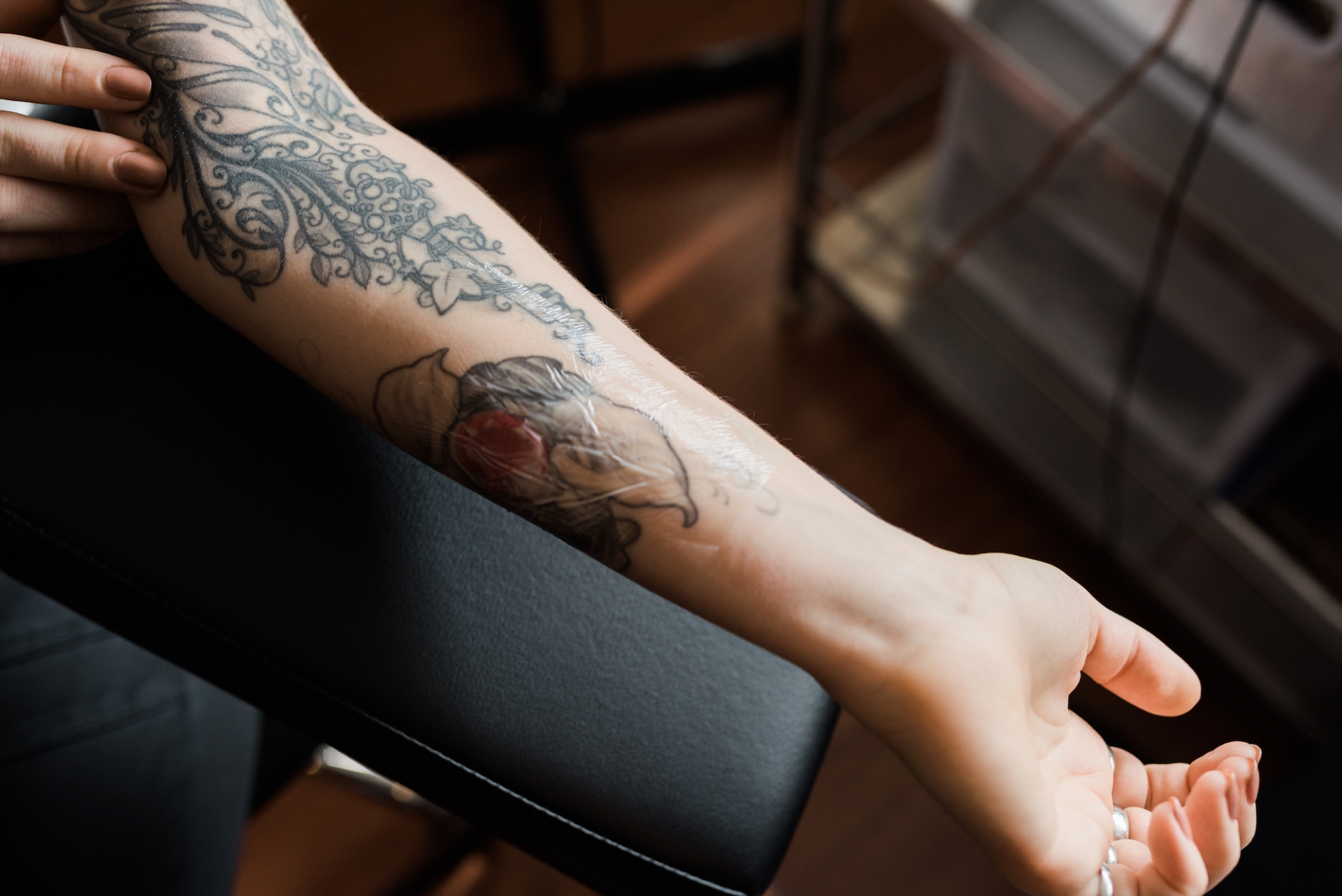
Avoid Ignoring Professional Aftercare Instructions
Every tattoo artist has developed their aftercare recommendations based on years of experience, their specific techniques, and the types of inks they use. Ignoring these personalized instructions in favor of generic internet advice or well-meaning friends' suggestions can lead to complications that could have been easily avoided.
Your tattoo artist knows exactly what type of needles they used, how deeply they worked, what brand of ink they applied, and how your skin responded during the tattooing process. This specific knowledge allows them to provide tailored aftercare advice that accounts for these variables. What works for one person's tattoo might not work for yours, especially if different techniques or products were used.
Professional aftercare instructions typically cover specific timelines for cleaning, moisturizing, and activity restrictions. They may recommend particular products or brands based on their experience with how different items interact with their preferred inks. Some artists provide detailed schedules for the first few weeks, while others give general guidelines that you're expected to follow consistently.
The importance of early intervention cannot be overstated. If you notice any signs of complications—unusual swelling, excessive redness, pus, or signs of allergic reaction—contact your tattoo artist immediately. Many issues that seem minor can become serious problems if not addressed quickly, while early intervention can often prevent permanent damage.
Don't hesitate to reach out to your artist with questions or concerns during the healing process. Reputable professionals want their work to heal beautifully and are usually happy to provide guidance when issues arise. Keep their contact information readily available and don't wait until problems become severe to seek help.
Recognizing and Avoiding Common Complications
Understanding the warning signs of tattoo complications can mean the difference between a minor issue that resolves quickly and a serious problem requiring medical intervention. While most tattoos heal without major complications, knowing what to watch for helps you take action before problems become permanent.
Infection is the most serious complication to watch for during tattoo healing. Normal healing involves some redness, swelling, and tenderness, but infection symptoms go beyond typical recovery signs. Watch for red streaking extending from the tattoo, excessive warmth, pus with a foul odor, fever, or swelling that worsens rather than improves after the first few days. These symptoms require immediate medical attention, as tattoo infections can become serious systemic problems if left untreated.
Allergic reactions to tattoo ink, while less common, can occur days or even weeks after getting tattooed. Symptoms include severe itching, raised bumps or hives around the tattoo, persistent swelling, or unusual color changes in the ink. Red ink is most commonly associated with allergic reactions, but any color can potentially cause problems in sensitive individuals.
Other complications to monitor include:
- Excessive scarring: Raised, thick, or keloid scarring that extends beyond the tattoo boundaries
- Ink rejection: Your body pushing out ink particles, causing raised areas or color loss
- Blowouts: Ink spreading beyond intended lines due to too-deep needle penetration or healing trauma
- Poor color retention: Significant fading or patchiness that goes beyond normal healing
- Prolonged healing: Tattoos that don't show improvement after 2-3 weeks
Prevention remains your best defense against complications. Following proper aftercare instructions, maintaining good hygiene, avoiding the risky behaviors outlined in this article, and seeking professional help when concerns arise will dramatically reduce your risk of serious problems. Remember that investing time in proper aftercare now saves you from potentially expensive and painful corrections later.
So, what to avoid after getting a tattoo? The answer is simple: avoid sun exposure, water submersion, picking or touching, tight clothing, harsh skincare products, excessive sweating, alcohol and smoking, ignoring professional advice, and overlooking warning signs of complications. These nine critical mistakes can permanently damage your artwork, but they're all completely preventable with proper knowledge and discipline. At H2M Tattoo Studio, we've guided countless clients through successful healing journeys, and the difference always comes down to following proper aftercare protocols. Your fresh tattoo represents both an artistic investment and a healing wound that demands respect and attention during the critical first few weeks.
>>>> NOTE NOW:

